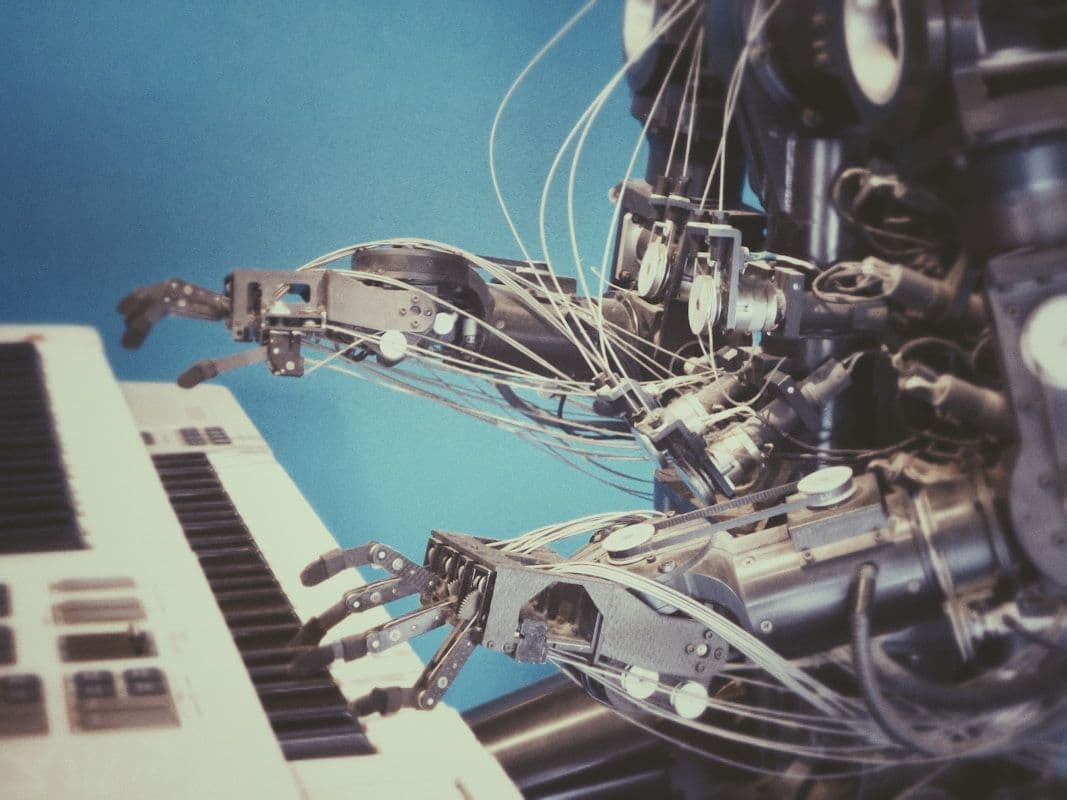Exploring Dalle 3 and Nextjs
AI-driven image generation with Dalle 3 and Next.js creates dynamic, visually captivating web applications that transform user experiences. Dalle 3's ability to generate high-quality images from text descriptions lets developers push creativity and innovation boundaries.
Key benefits:
- Enhanced Creativity: Dalle 3 turns text into visuals, sparking creativity.
- Seamless Integration: Next.js provides a robust framework for easy AI image generation in any project.
- User Engagement: Dynamic visuals boost interaction and captivate audiences.
- Efficiency: Streamlined processes let developers focus on innovation without complex setups.
Dalle 3 and Next.js craft unforgettable digital experiences. AI-generated visuals boost user engagement, satisfaction, and retention. This duo adapts to diverse needs, from e-commerce platforms to cutting-edge galleries.
This combination helps developers create functional, inspiring, and engaging web apps using AI. Dalle 3 and Next.js take web projects to the next level.
Setting Up Your Nextjs Project
Setting up your Next.js project to harness the power of Dalle 3 is straightforward. Follow these steps, and you'll be on your way to integrating AI-driven image generation in your web app.
- Initialize Your Project: Fire up your terminal and run
npx create-next-app@latest. This command will kickstart your Next.js application. - Configure TypeScript and TailwindCSS: During setup, choose TypeScript for type safety and TailwindCSS for streamlined styling. These tools enhance your development process.
- Install Necessary Dependencies: Add Cloudinary for efficient image management and OpenAI for AI integrations. Use the following commands:
npm install cloudinary
npm install openai- Edit
next.config.js: This file is crucial for configuring your project. You'll need to set up image optimization and handle external image sources. Here's a snippet to guide you: module.exports = {
images: {
domains: ['res.cloudinary.com'],
},
}- Optimize Image Handling: Configure Cloudinary to manage your images effectively. Ensure you integrate it into your project by setting up your account and API keys.
For those looking to expand their understanding of building scalable applications, exploring strategies for building large-scale applications with Next.js can provide valuable insights. Configuring your Next.js project properly is essential. It ensures seamless integration with Dalle 3, making AI-driven image generation efficient and effective. By focusing on these key steps, you'll lay a solid foundation for your application.
Why Choose Nextjs for AI
Next.js is a powerhouse for AI-powered web development. Server-side rendering (SSR) and static site generation (SSG) are two standout features. These aren't just fancy terms. They're crucial for boosting site performance and improving SEO. With SSR, your pages load faster and deliver content quickly. SSG takes it further by pre-rendering pages at build time, offering blazing speed and efficiency. For more on how these features can enhance your web app's performance and SEO, explore our insights on using Next.js for web app development.
Next.js excels in optimizing image handling. It's vital for web apps that rely on AI-generated visuals. The framework ensures images are loaded efficiently, reducing layout shifts and enhancing user experience. This means smoother, more engaging interactions for your users.
- Performance Boost: SSR and SSG enhance load times and SEO.
- Optimized Images: Efficient loading reduces layout shift.
- Seamless Integration: Works effortlessly with AI tools.
Next.js makes integrating AI tools straightforward. It supports a range of libraries and APIs, simplifying the process of building intelligent applications. This compatibility lets developers focus on innovation, leveraging AI to create smarter, more responsive web apps. To understand how Next.js can be applied across different domains, from e-commerce to enterprise applications, check out our article on key use cases for Next.js.
Choosing Next.js means building on a solid foundation. It ensures your AI applications not only perform well but also provide a seamless, engaging user experience. This makes it an ideal choice for developers aiming to create scalable, fast, and reliable applications.

Optimizing Image Loading with Nextjs
Optimizing image loading in your Next.js application is key to delivering a fast, seamless user experience. Start by leveraging server-side rendering and dynamic image processing. These strategies ensure your content loads quickly, keeping users engaged and happy. For more insights on optimizing performance, you can explore common challenges in Next.js MVP development, which covers techniques like image compression and caching.
Use content delivery networks (CDNs) to supercharge your image delivery. CDNs store image copies in multiple locations, reducing load times by serving images from the nearest server. This approach boosts performance, especially for global users.
- CDN Utilization: Distribute images across various locations for faster access.
- Modern Formats: Employ WebP and AVIF formats for efficient image compression without compromising quality.
Responsive images are a must. They adapt to different screen sizes, ensuring optimal display on any device. Implement lazy loading to defer image loading until needed, cutting down initial load times and improving performance.
- Responsive Images: Ensure images adjust to various screen sizes for better user experience.
- Lazy Loading: Load images only when visible on the screen, reducing unnecessary initial data load.
By focusing on these strategies, you'll minimize layout shifts and enhance your app's efficiency. It's all about making your web app responsive and quick, ensuring users have the smoothest experience possible.
Styling Your App with Tailwind CSS
Tailwind CSS makes styling your Next.js application easier, especially when used with Dalle 3. It's great for developers because it lets you customize quickly and easily.
Tailwind CSS gives you ready-to-use components and utility classes. These tools make styling faster by letting you add styles right in your HTML. Here are some useful utility classes:
- Flexbox Utilities: Control layout with classes like
flex,justify-center, anditems-center. - Spacing: Fine-tune your design using
m-4for margins andp-2for padding. - Typography: Change how text looks with
text-lg,font-bold, andtext-center.
Responsive design matters for modern websites. Tailwind CSS has responsive modifiers to make your app look good on any screen. These modifiers help create layouts that adapt, giving users a consistent experience.
Using CSS properties like object-fit and sizes makes your design even more flexible. These properties help images scale and adjust without stretching, keeping them looking good on different devices.
For those interested in further optimizing their Next.js applications, exploring Next.js SaaS boilerplates can provide valuable insights into streamlining development with pre-built components and features. Tailwind CSS helps you build efficient and attractive Next.js apps with less work. It makes creating appealing apps easier and more enjoyable.
Backend Deployment Best Practices
Efficient backend deployment is crucial for your AI-driven Next.js application. Serverless architecture, particularly AWS Lambda, offers a scalable and efficient solution. It allows you to run code without provisioning or managing servers, automatically scaling with your application's demands. This flexibility is key in handling varying workloads, optimizing cost, and ensuring reliable performance.
- Automatic Scaling: AWS Lambda scales automatically based on the number of incoming requests, ensuring your app handles spikes in traffic seamlessly.
- Cost Efficiency: Pay only for compute time, reducing costs as resources are used only when needed.
- Ease of Management: No need to manage infrastructure, allowing you to focus on developing features.
Configuring cloud services with necessary credentials is essential for secure access. This setup ensures that your backend services integrate smoothly with frontend components, enhancing data processing and storage management. Security here isn't just an add-on; it's a fundamental part of deployment.
When choosing a framework for your backend, consider FastAPI over Flask. FastAPI is known for its speed and efficient API documentation generation. It provides asynchronous support, which can significantly enhance performance, especially in applications that require handling multiple requests simultaneously. FastAPI's automatic interactive API documentation is a bonus, making it easy to test and understand your API endpoints.
For those interested in exploring alternatives to Next.js for building SaaS applications, consider reviewing our detailed analysis of various frameworks. This resource provides insights into JavaScript-based options like Gatsby and Angular, as well as non-JavaScript frameworks, helping you choose the best tool for your project.
By integrating these backend deployment strategies, your Next.js application can achieve optimal performance, scalability, and security, laying a strong foundation for your AI-driven projects.
Integrating Dalle 3 for Image Generation
Integrating Dalle 3 with Next.js opens up exciting possibilities for AI-driven image creation. By using OpenAI's API, you can transform text descriptions into stunning visuals, adding a unique layer to your applications. This process is straightforward and can significantly enhance your app's creative capabilities.
Start with the setup. First, you'll need to get your OpenAI API key. This key is crucial for accessing the image generation capabilities. Here’s how you integrate it:
- Secure Your API Key: Head to OpenAI’s platform, generate your API key, and keep it safe. It’s like the key to your creative powerhouse.
- Install OpenAI Library: Use npm to install the OpenAI library in your Next.js project.
npm install openai- Configure Environment Variables: Set your API key in the
.env.localfile. This step ensures your key remains secure and is easily accessible within your application. - Create API Route: Set up an API route in Next.js to handle requests to OpenAI. This route will process text inputs and return generated images.
- Handle API Requests: Implement logic within your API route to send requests to OpenAI and handle responses. This is where magic happens—text turns into images.
Once you've got Dalle 3 running, consider using Cloudinary for storing and enhancing those images. Cloudinary optimizes delivery through CDNs, ensuring fast access and excellent performance. It simplifies media management, helping your app handle images efficiently, whether for basic storage or advanced image processing. This integration not only boosts your app's functionality but also enhances user engagement with dynamic visuals.

Overcoming Development Challenges
Building AI-driven applications with Next.js and Dalle 3 can present some hurdles. Outdated tutorials and resources often frustrate developers. Using templates and modern toolkits is recommended to streamline the process. For those looking to accelerate development, exploring the synergy between AI-powered code editors like Cursor and Next.js SaaS boilerplates can be beneficial. These tools work together to streamline project setup and enhance productivity, as detailed in our article on supercharging development with Cursor and Next.js SaaS boilerplates.
Managing state and handling user input efficiently is essential. React provides powerful tools for this, but integrating with AI components can add complexity. Using TypeScript helps maintain type consistency throughout the application, making development smoother and reducing errors.
Here’s a list of recommended tools to enhance your workflow:
- React Query: Streamlines data fetching and state management.
- Redux Toolkit: Simplifies state management with less boilerplate.
- Formik: Eases form management and validation.
Real-time error and performance monitoring is crucial. Tools like Sentry provide insights into application performance and help identify issues promptly. This ensures a seamless development experience and a reliable application for users. Monitoring tools not only detect errors but also offer context for resolving them quickly.
By adopting these strategies and tools, developers can overcome common challenges and focus on creating functional and efficient AI-driven applications. This approach results in a more robust and user-friendly product.
Key Takeaways and Future Steps
Using Dalle 3 with Next.js enhances web development creativity. AI image generation enables unique, responsive applications. Together, they boost user engagement with dynamic visuals while integrating smoothly with modern tech.
Here's what you need to know about using Dalle 3 with Next.js:
- Innovative: AI images boost web app creativity.
- Better User Experience: Eye-catching visuals keep users engaged.
- Efficiency: Easy integration frees developers to create.
- Scalability: Next.js helps apps grow with your business.
Check out the docs to learn how to use these tools effectively. Keep learning and adapting as you build. Stay current with new tools and practices to keep your development efficient and apps performing well. As AI and web dev evolve, update your app-building approach.
Ready to level up your project? Reach out to us. We can help bring your ideas to life quickly with an MVP. Get in touch – we'd love to chat!


